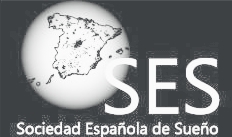Primary Care Physicians Can Comprehensively Manage Sleep Apnea Patients: A Non-inferiority Randomized Controlled Trial
Primary Care Physicians Can Comprehensively Manage Sleep Apnea Patients: A Non-inferiority Randomized Controlled Trial
Sánchez-Quiroga MÁ, Corral J, Gómez-de-Terreros FJ, Carmona-Bernal C, Asensio-Cruz MI, Cabello M, Martínez-Martínez MÁ, Egea CJ, Ordax E, Barbe F, Barca J, Masa JF; Collaborating group (Spanish Sleep Network) and Collaborating Primary Care group. Am J Respir Crit Care Med. 2018 Apr 17.
Abstract
RATIONALE: General practitioners play a passive role in obstructive sleep apnea (OSA) management. Simplification of the diagnosis and use of a semi-automatic algorithm for treatment can facilitate the integration of general practitioners, which has cost advantages.
OBJECTIVE: To determine differences in effectiveness between primary healthcare area (PHA) and in-hospital specialized management protocols during six months of follow-up.
METHOD: A multicenter, non-inferiority, randomized, controlled trial with two open parallel arms and a cost-effectiveness analysis was performed in six tertiary hospitals in Spain. Sequentially screened patients with suspected OSA were randomized to PHA or in-hospital managements. The PHA arm received a portable monitor (PM) with automatic scoring and semi-automatic therapeutic decision-making. The in-hospital arm underwent polysomnography (PSG) and specialized therapeutic decision-making. Both arms received continuous positive airway pressure (CPAP) treatment or only sleep hygiene and dietary treatment. The primary outcome measure was the Epworth sleepiness scale (ESS). Secondary outcomes were the health-related quality of life, blood pressure, incidence of cardiovascular events, hospital resource utilization, CPAP adherence and within-trial costs.
RESULTS: In total, 307 patients were randomized and 303 were included in the intention-to-treat analysis. Based on the ESS, the PHA protocol was non-inferior to the in-hospital protocol. Secondary outcome variables were similar between protocols. The cost-effectiveness relationship favored the PHA arm, with a lower cost of 537.8€ per patient.
CONCLUSION: In-hospital management is not necessary for approximately half of patients with a low to high OSA suspicion. Given the clear economic advantage of outpatient management, this finding could change established clinical practice.


